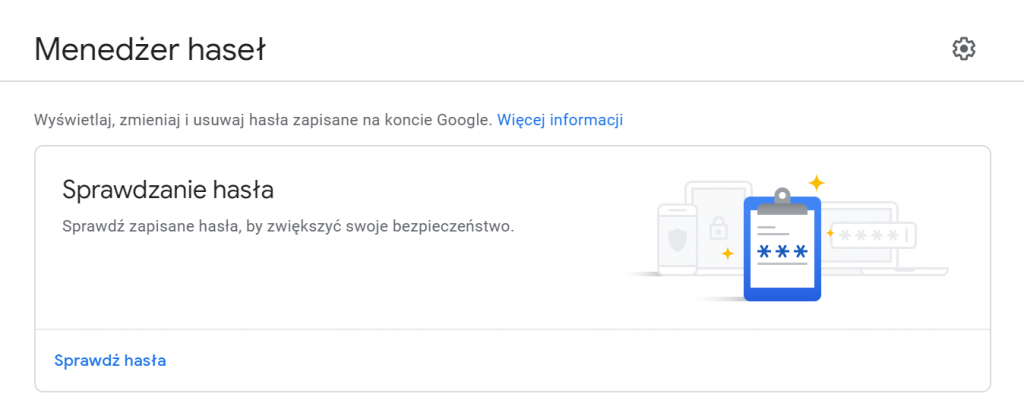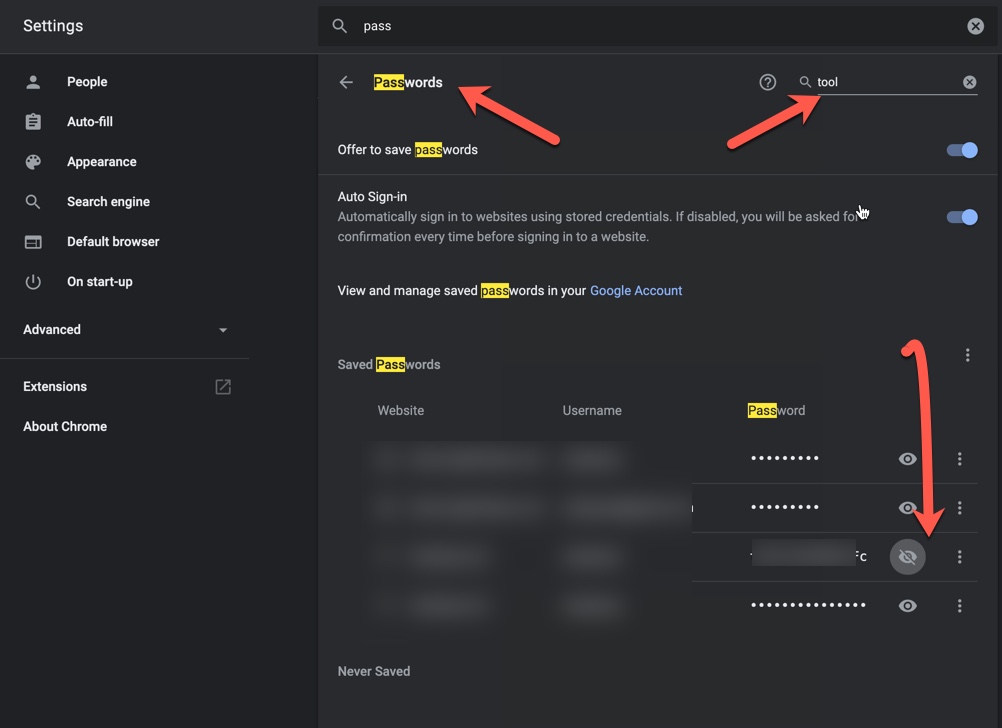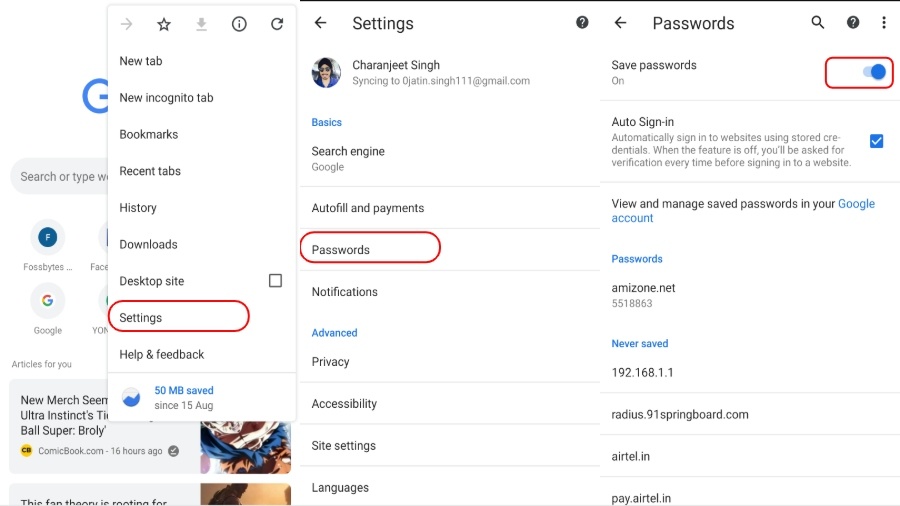
- #Google chrome password manager web android
- #Google chrome password manager web code
- #Google chrome password manager web windows
The launch date for retail hardware featuring ChromeOS was delayed from late 2010 until the next year. In 2010, Google released the unbranded Cr-48 Chromebook in a pilot program. The ChromiumOS build environment is no longer restricted to any particular distribution, but installation and quick-start guides use Debian's (and thus also Ubuntu's) apt syntax. In February 2010, the ChromiumOS development team switched to Gentoo Linux because Gentoo's package management system Portage was more flexible. Ĭanonical was an early engineering partner on the project, and initially ChromiumOS could only be built on an Ubuntu system. Additionally, Chris Kenyon, vice president of OEM services at Canonical Ltd, announced that Canonical was under contract to contribute engineering resources to the project with the intent to build on existing open-source components and tools where feasible. At the conference, the operating system booted up in seven seconds, a time Google said it would work to reduce.

He previewed a desktop which looked very similar to the desktop Chrome browser, and in addition to the regular browser tabs also had application tabs, which take less space and can be pinned for easier access. At a Novemnews conference, Sundar Pichai–at the time Google's vice president overseeing Chrome–demonstrated an early version of the operating system.

#Google chrome password manager web code
On November 19, 2009, Google released ChromeOS's source code as the ChromiumOS project. Ten years later, in 2019, the recovery images Google provided for ChromeOS were still only between 1 and 3 GB in size.

#Google chrome password manager web windows
not mechanical hard-disks), and noted that ChromeOS only required one-sixtieth as much drive space as Windows 7. In November 2009, Matthew Papakipos, engineering director for the ChromeOS, announced that ChromeOS would only support solid-state storage (i.e. Google has requested that its hardware partners use solid-state drives "for performance and reliability reasons" as well as the lower capacity requirements inherent in an operating system that accesses applications and most user data on remote servers. ĬhromeOS was initially intended for secondary devices like netbooks, and not as a user's primary PC. Developers also noted their own usage patterns. To ascertain marketing requirements, developers relied on informal metrics, including monitoring the usage patterns of 200 machines used by Google employees. The operating system is now usually evaluated in conjunction with the hardware that it runs on. Since 2018, ChromiumOS/ChromeOS version 69 onwards also support Linux applications, which are executed in a lightweight virtual machine with a Debian environment.
#Google chrome password manager web android
ChromeOS (but not ChromiumOS) from 2016 onwards can also run Android applications from Google Play. Īll ChromiumOS and ChromeOS versions support progressive web applications (such as Google Docs or Microsoft Office 365), as well as web browser extensions (which can resemble native applications). ChromeOS was used primarily to run web applications. Google announced the project in July 2009, initially describing it as an operating system where applications and user data would reside in the cloud. It is derived from the open-source ChromiumOS and uses the Google Chrome web browser as its principal user interface. com /codesearch /chromium /src /+ /refs /heads /master-original /chromeos /Īura Shell (Ash), Ozone ( display manager) X11 apps can be enabled in recent ChromeOSĬhromeOS, sometimes styled as chromeOS and formerly styled as Chrome OS, is a Linux-based operating system developed and designed by Google. Preinstalled on Chromebooks, Chromeboxes, Chromebits, ChromebasesĬlosed-source with open-source componentsġ.131 (July 20, 2023 7 days ago ( ) ) ġ.46 (July 24, 2023 3 days ago ( ) ) Devġ.39 (July 18, 2023 9 days ago ( ) ) Ĭhromium. Turn off “Autofill addresses” and “Autofill credit cards”.C, C++, assembly, JavaScript, HTML5, Python, Rust.Click Privacy & Security and scroll down to the Forms and Autofill section.To stop Firefox from offering to save and fill your credit cards or addresses: If you’re using Brave, move your saved passwords to 1Password, then delete them from Brave.If you’re using Edge, move your saved passwords to 1Password, then delete them from Edge.If you’re using Chrome, move your saved passwords to 1Password, then delete them from Chrome.To stop Chrome, Edge, or Brave from offering to fill your passwords, you’ll need to delete the saved passwords in your browser: Then follow the additional steps for Chrome, Firefox, Edge, or Brave. In the General section, make sure “Make 1Password the default password manager” is turned on.Click in your browser’s toolbar, then click and choose Settings.To turn off the built-in password manager in your browser, make 1Password the default password manager: 1Password in your browser is only available on Mac, Windows, Linux, and Safari on iPhone and iPad.

1Password in your browser is only available for Safari on iPhone and iPad.


 0 kommentar(er)
0 kommentar(er)
